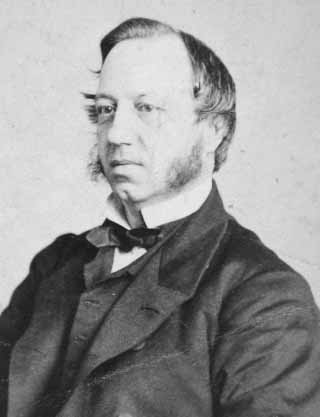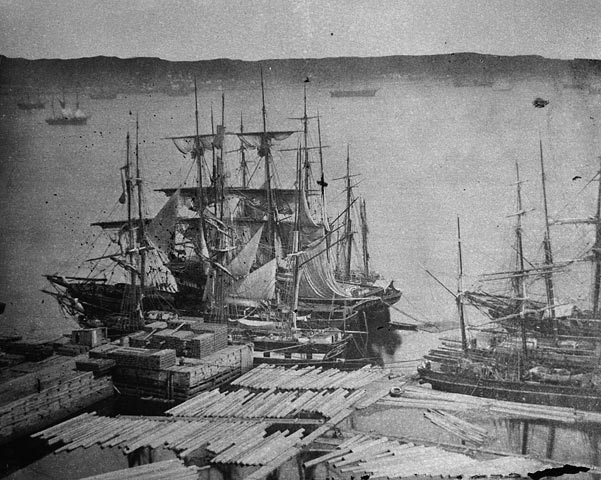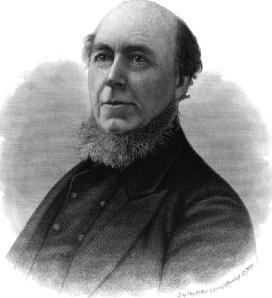In the United States and much of Europe, immigration and nativism have provided ample fodder for the front page in recent years. So it has often been. When it comes to geographic mobility, politicians and policymakers worry far more about those who cross into their country than about those who leave. In Canada’s case, such concern was beyond abundant in the 1830s and 1840s. Destitute immigrants from the British Isles posed a major economic, political, and public health challenge to colonial leaders.
Beginning in the late 1840s, however, officials of the Province of Canada devoted considerable attention to the opposite problem: outmigration. Those crucial years in the middle of the century marked a migratory watershed. From being a predominantly receiving nation, Canada (or, more fairly, British North America) became a demographic donor. Over the course of the subsequent century, it would pour approximately three million souls onto American soil.
That moment of transition is especially worthy of our attention. What sent so many British North Americans abroad? Under what circumstances? What effect did mass emigration have on Canada and neighboring colonies? How did policymakers react?
Two reports commissioned by the legislature of the Province of Canada provide semi-official, perhaps partial, answers to all of these questions. Although Lord Durham had alluded to emigration in his infamous report, issued in 1839, little of the phenomenon appeared in newspapers, or surfaced in political debates, until the end of the following decade. In 1849, a committee chaired by P. J. O. Chauveau, the future premier of Quebec, published dramatic findings that placed emigration at the center of the “national” agenda.
It is a painful task for Your Committee to have to inform Your Honorable House, that the emigration of Her Majesty’s Subjects in this Province, to places out of Her Majesty’s dominions, is much more considerable than was generally believed, and threatens to become a real calamity for Lower Canada.
So began Chauveau and his colleagues in 1849—before acknowledging both the disappointed hopes of the emigrants and the legitimacy of migration. “It would,” they wrote, “undoubtedly, be absurd to attempt to prevent or even to discourage those inhabitants of the country who can find more accessible, better cultivated, and cheaper lands elsewhere, from seeking out of their country for that which their country denies them.” As the introduction suggested, the committee confined its attention to the people of Lower Canada who were seeking such resources in the United States, although existing studies indicate that other parts of British North America had their own considerable hemorrhage.

It seems that “[t]he emigration [had begun] principally after the insurrections of 1837 and 1838, and was then strictly confined to the District of Montreal, and to such parts of that District as had suffered the most from the depredations carried on at the period.” Ordinary Canadians helped to build railroads in United States, whereas political émigrés went to the Midwest and reported opportunities back to friends and relatives in Canada.
That there were émigrés is a matter of fact, but whether any substantial mass of workers found widespread opportunities in the immediate aftermath of the Panic of 1837 is dubious. The committee itself recognized that it was only in 1841, in the counties of Huntingdon and Rouville, that “the first emigrations of any importance were remarked.” The movement had since spread to people in the District of Three Rivers, who traveled to the Eastern Townships before crossing into the United States. At present, residents of Yamaska and Nicolet counties (south and east of Trois-Rivières) went to work “in the brick yards and other American manufactories; they go and return every year—about one fourth remaining behind in the States.”
In 1848-1849, the migration was also visible in Montreal and in counties on the Ottawa River. From the District of Quebec, French Canadians went to the United States on the Richelieu River or on the Kennebec Road. People from Bellechase, L’Islet, and Kamouraska succumbed to the lure of the western states; “[t]hey almost all go to Chicago by the canals and the lakes.” Alas, French Canadians were not alone: foreign-born English speakers seemed likely to sell what land they had to settle in the Midwest.
Numerical assessments of the migration were “in general very vague and unsatisfactory.” Partial information collected by Roman Catholic priests indicated a loss of 10,000 and 4,000 people in the dioceses of Montreal and Quebec, respectively, in the prior five years. But the committee seemed dissatisfied with these estimates as well as with Father Charles Chiniquy’s total of 70,000 expatriates. The committee reasoned its way to a figure of 20,000 emigrants from Lower Canada for the same period. Though this may not have appeared as a “calamity” in a colony of 800,000 souls, on-going emigration at this pace would soon deplete the Canadas. Arrivals from the British Isles were now failing to make up for the departure of Canadians.

Emigration was actually so extensive that Chauveau and his colleagues identified eight separate “classes” of people moving to the Great Republic. Among them were workers from the Ottawa River region and from the port cities who were suffering from the depressed lumber industry, some of whom went to Maine, Vermont, and New York State. The committee also noticed educated young men from “respectable but poor families” who lacked professional opportunities.
It was, however, the agricultural class that caused the greatest concern. The report of 1849 recognized the many ills to which this group’s expatriation ought to be attributed: seigniorial dues and the high cost of Crown Lands; the problem of bad or inexistent roads to remote parcels; distance from markets; debt and bankruptcy; poor harvests; and “the backward state of agriculture.” At the same time, progress was blocked by “[t]he speeches of wiseacres and extinguishers (eteignoirs) against every thing in the shape of progress, founded on the horror of taxation.”
The result? Emigrants exposed themselves to disease and destitution in the United States. Some provident and energetic families did prosper in the United States, admittedly, but would do so in Canada even with a small improvement in agricultural conditions there.
One potential solution was to draw the capital and labor needed to turn Canada into a great manufacturing power that could rival the American neighbor. The committee praised the recent tariff law and called for improvements to the port of Quebec City to expand its trade. Yet it said something of the committee’s conception of British North America (and its economic vocation) that nearly all of their proposals to remedy mass emigration addressed agricultural conditions. Roads ought to be opened to remote parts of the Eastern Townships, the area around Rimouski, and the broad region from the Laurentians to the Saguenay River. Other improvements, notably to improve steamship service, were needed; the committee mentioned railways in passing. Land should remain available at a low cost to those with “sufficient proof of morality and good intentions.” Agricultural societies and model farms might also serve a purpose in disseminating best practices and increasing yields. Special praise was reserved for Catholic clergymen who promoted domestic colonization.

The emigration committee thus clearly assigned the government a role as an agent of economic development. It did not stop there: it also held property owners and entrepreneurs as responsible for the current economic and migratory conjuncture. Absentee landlords and speculators were one problem; just as detrimental were the landowners who failed to improve or parcel out their tracts, or put a lien on tenants’ lumber.
The right of property is certainly sacred and inviolate: but the soil only belongs to man on condition that he shall work and cultivate it; and possession carries with it the obligation to make use of what one possesses in such a manner as not to injure others. Property should have its duties as well as its rights.
As the report put it, the state protects property and, in return, the property owner should help to support the interests of the state.
In the decade since Lord Durham had left the colonies, people in the Canadas had been chiefly preoccupied with the issues he raised, among them colonial autonomy and the rights of French Canadians and interethnic relations. Increasingly the conversation was shifting: the fate of French Canada rested in the hands of would-be emigrants, a problem that would seemingly confound policymakers for generations to come. But the masterful report of 1849, supported by a long appendix of local accounts by informed observers, concretely led to little change.
Eight years later, chair Joseph Dufresne and a second special committee on emigration reported on the issue in very similar terms. That the two committees identified the same problems, and that so little was addressed from one to the next, set the tone for the remainder of the century on political responses to the great hemorrhage.
Source
Report of the Select Committee of the Legislative Assembly, Appointed to Inquire into the Causes and Importance of the Emigration Which Takes Place Annually, from Lower Canada to the United States. Printed by Order of the Legislative Assembly. Montreal: Rollo Campbell, 1849. Google Books.
Leave a Reply